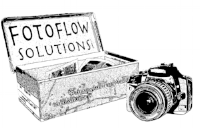Apple Photos – Options for setting up on your computer
/The Apple Photos app exists both on your computer as a desktop application, and as a mobile app on your iPhones and iPads.
The way Apple Photos typically works is it uses your iCloud account to sync your photos between your computer and your mobile devices. Apple calls it Hand Off, the idea being that if you take a photo on your iPhone, it will then sync (or hand off) that photo up to iCloud, which then syncs it down to your computer (and other devices you may have).
When you edit a photo on one device, it updates that photo on all other devices. And when you delete a photo on one device it also deletes it on all other devices, this is very important to remember.
All your photos are placed in the Apple Photos application, which is actually a folder (or package) with a series of other folders containing your photos and a lot of other files that Apple Photos uses to manage your library. It is located in your Pictures folder within your User account and looks like this:
Your Macintosh/Users/yourname/Pictures/Photos Library
This all works quite well as long as you have enough storage on your computer and your iPhone to accommodate all your photos and videos. The problem is that we are taking more photos than our devices can keep up with, and so other options sometimes need to be explored.
Option #1
On every computer and mobile device you can do what is called Optimization. When you turn on the Optimization setting in the Apple Photos Preferences on that device, it will make smaller versions of your photos and video, but only AS NEEDED.
It will not make smaller files of all your images, only when storage starts to run low on that device. You cannot control which images it will shrink or how many, it does what it does in the background.
It always keeps the original large files in your iCloud account so if you want to edit or print an image that happens to be optimized, it temporarily sends the larger file to that device to do whatever task it is needed for.
You can optimize both your computer and iPhone or just one of them. Optimizing the storage on your iPhone or iPad is usually a great and necessary option. Optimizing your computer works well, but understand that you will not have a full library of your original images on your computer, the only complete library of original images will now reside only in your iCloud account.
Option #2
Sometimes even optimization doesn’t solve the storage problem on your computer; in that case you can choose to keep your Apple Photos library on an external hard drive (EHD).
This will free up a lot of space and will work just as well with only one slight difference. In order to view, edit and print your images on your computer, you will need to have the external hard drive plugged into your computer. EHD will also have to be plugged in for new images to sync down from iCloud.
But that’s just for our computer, you will always be able to view everything on your iPhone or iPad.
Option #3
Sometimes optimization will not help with either the storage on your iPhone and your computer; so there is a third option that is kind of a hybrid of the first two options.
In this case, only a limited time period of your images will be kept on your computer, maybe the last year or two. All prior years will all be placed on an external hard drive (EHD).
This however causes some differences in the way Apple Photos will work with your photos.
All the images on your computer’s hard drive will still sync to your iCloud account and iPhone as normal, but the older images that are placed on the EHD will not be available in iCloud and therefore not available on your iPhone.
They will however be available on your computer’s desktop version of Apple Photos. As long as the EHD is plugged in, you can view your all your photos, edit your photos and print your photos as normal, they just will not be on your phone anymore.
The time period you choose to keep on your computer’s hard drive versus what you will put on your EHD is up to you, but the more you keep on your computer, the more storage you will use on your computer and iPhone.
All new photos and videos you take on your iPhone will be synced to iCloud and to your computer, in that regard nothing will change.
In a year or two, you may wish to move some additional photos from your computer to your EHD to free up space, it is a simple process.


